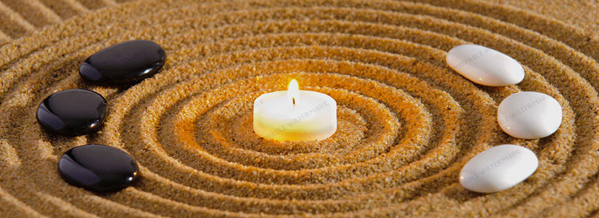Deciding to create a feng shui garden can be a great opportunity to introduce harmony and peace to your home. There are some important aspects of feng shui gardening that should not be overlooked, such as the proper footpaths, accessories, and colors, in order to maximize the garden`s overall potential. Here are a few basic ideas for the best feng shui garden plants.
Color is key.
Feng shui gardening is not about specific plants or shrubs, but more about harmonious color and style. Therefore, do not look for plants to fit the need, but for colors that blend well and promote the feelings you are hoping to achieve. Here is a brief rundown of colors and meanings:
- Bright colors represent energy and life. Reds, yellows, oranges, and bright shades of purple are the best way to introduce energetic feelings, passion, and overall success to your garden area.
- Neutrals are representative of clarity, well-being, and stability for the garden. This includes shades of beige and lighter browns, pale yellows, and white.
- Darker shades, such as blue, green, or dark purple, are indicative of peace and tranquility. Use them to promote abundance, health, and freshness.
Trees are protectors, but should not be abundant.
The feng shui style recommends that trees protect the backyard and stand guard at the front door, but your yard should be dominated by sunshine. Allowing the sun to shine through will maximize the chi potential for your garden and home, adding value to your home in many different and unique ways.
While trees in the backyard should act as a border to protect your property, there should be one tree on each side of the front door as a symbol of safety and protection for your home`s main entrance. These trees should not keep passers-by from seeing your home, reducing the curb appeal, but should instead remind others that you value your privacy and want to protect your property.
Elements should be adequately represented.
There are five distinct elements represented in a feng shui garden: earth, metal, fire, water, and wood. Each has a very different meaning, and leaving one out can disrupt the garden`s chi, and that of your home overall. The center of the garden should be reserved as the t`ai chi area, or the center, which represents the overall health and prosperity of your garden and home.
Fire: South section. Can also be a part of the southeast and southwest areas.
Water: North Section. Can also be a part of the southeast and east sections.
Earth: Northeast/Southwest Sections. Should also be represented in the center.
Metal: West/Northwest Sections. Can also be represented in north section.
Wood: East/Southeast. Can also be fitting for south section.
Each element necessitates unique accessories, such as fountains in the water area, using resources such as the Internet if you need help finding the right options. Be sure to incorporate these accessories to maximize the chi potential in your feng shui garden and limit the negative chi that comes into your home or your life.
Designer and writer, Alyssa Davis of Metal-Wall-Art.com, has many ideas for bringing style to your home with metal wall art hangings and coffee metal wall art.
Previous article | Next article






